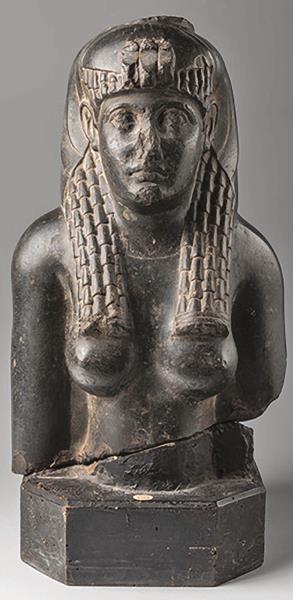
Those who sat on the throne of Egypt, one of the mightiest kingdoms of the ancient world, wielded a tremendous amount of power. At a time when women did not have as many rights as men, Egypt’s queens nevertheless shaped the course of history, with some even reigning independently. Queens of Egypt, an exhibit at the National Geographic Museum, explores these women.
Featuring more than 300 artifacts, the exhibit focuses on queens from a period of 1,500 years—from the beginning of Egypt’s New Kingdom with Queen Ahmose-Nefertari (c. 1539 B.C.E.) through the end of the Ptolemaic period with Cleopatra VII (d. 30 B.C.E.). Statues, scarabs, papyri, perfume bottles, musical instruments, funerary stelae, and sarcophagi tell us about their lives. Visitors get to meet numerous Egyptian queens, including the female pharaoh Hatshepsut; Nefertiti, queen of the infamous pharaoh Akhenaten; and Nefertari, queen of Ramses II.
Organized by Pointe-à-Callière, Montréal Archaeology and History Complex, and Museo Egizio, Turin, in partnership with the National Geographic Society, the exhibit is informative and interactive. A highlight is a 3D visualization of Queen Nefertari’s large, ornate tomb in the Valley of the Queens. Visitors can virtually step inside the tomb and admire its elaborate paintings. Through computer simulations, they also have the opportunity to explore the harem, home of the queens, and the village of Deir el-Medina, home to the craftsmen who built tombs for Egypt’s kings and queens in western Thebes. Features like these provide a window into ancient Egyptians’ daily lives and beliefs about the afterlife.
Already a library member? Log in here.
Institution user? Log in with your IP address.

